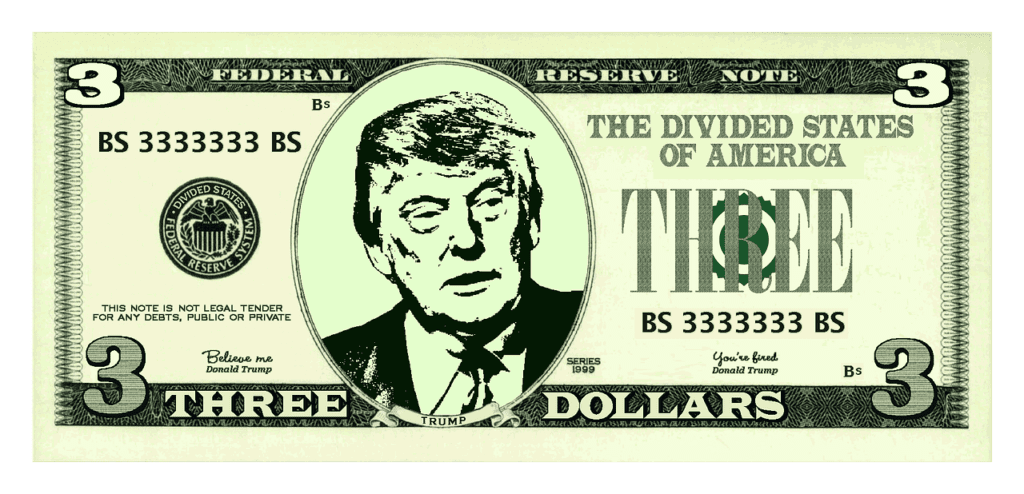I was more than a little surprised to see that the Trump campaign actually has a plan in the making for ending the independence of the Federal Reserve. This is a mad idea; the independence of the Federal Reserve is as essential to the American economy as the independence of the Supreme Court is to our Constitution.
I thought that Trump’s advisers knew better, but apparently, that is not the case.
So far, no news outlet has published the plan in its details—ostensibly because the plan is still evolving—but as I explained in Part I, we know more than enough to draw conclusions regarding the disastrous consequences of this plan. Those consequences range from lost faith in the U.S. economy among foreign investors—a point that Deutsche Bank has already made—to hyperinflation and the ensuing collapse of the U.S. economy.
Depending on how aggressively a Trump administration would want to end the Fed’s independence, there is really no limit to what the consequences could be. However, that does not mean that you can ‘chip away’ a little bit of the central bank’s independence without much problem. On the contrary, you actually cannot take away any of the Fed’s independence without de facto turning the central bank into an office under the U.S. Treasury.
The reason is simple: the motivation behind an effort to fold the Federal Reserve under the Treasury—and the president’s control—stands in direct opposition to the Fed’s independence. Therefore, there is no compromise between the two statuses: either the Fed is independent, or it is not.
Before I address the question of why Trump would want to do this, let me note that this is not at all a pie-in-the-sky proposal. While it may ultimately never make its way through Congress, a similar idea has become surprisingly widespread among Democrats. I will elaborate on that in Part III; for now, let me just emphasize again that the biggest mistake we can make is to assume that a President Trump would refrain from trying to end the independence of the Federal Reserve.
The purpose behind ending the Fed’s independence is brutally simple: deficit monetization. A president wants to have control over the central bank simply so he can control its money supply. By doing that, he can print as much money as he desires to fund budget deficits. With the full destruction of the Federal Reserve’s independence, neither the president nor Congress would ever again have to worry about raising taxes.
At least, that is how it looks on paper. Reality is quite a different story.
It is for reasons of deficit monetization that there can be no compromise over the Fed’s status. Just like a woman can’t be a little pregnant, the central bank cannot set its monetary policy ‘a little’ to accommodate budget deficits. Either it accommodates, or it does not.
With that said, it is important to note that independent central banks are not necessarily insensitive to the government’s fiscal status. Even the most dedicatedly independent central banks adjust their monetary policies to the swings in government finances. The European Central Bank, originally meant to be independent both formally and in its policy-making, has shown itself to be accommodating and willing to work with governments that struggle with big budget deficits. The Federal Reserve went out of its way during the pandemic-related artificial economic shutdown to purchase federal government debt.
Central banks make these adjustments to the realities of government finances because runaway public debt is detrimental to the economy. However, when they do, they base their decisions on how it affects the soundness of their monetary policy—and, not to forget, inflation. To this point, it was the Federal Reserve, not the U.S. Treasury or Congress, that decided to end the purchases of U.S. debt that it began during the pandemic.
With inflation rising, the Fed’s decision to start raising interest rates in early 2022 put at least a temporary dampener on the most excessive Congressional fiscal frivolity.
Over 18 months, the Federal Reserve raised its funds rate from 0.08% to 5.33% (as midpoints of their policy ‘bandwidth’). This led to rapidly rising interest rates on government debt. From October 1st, 2022, to September 30th, 2023, the average interest rate on the U.S. government’s total debt rose from 1.87% to 2.86%.
This increase in the interest rate was responsible for approximately 89% of the rise in the debt cost.
The trend has continued. Since September last year, the average interest rate on the U.S. government has continued to increase; it currently stands at 3.16%.
It is with numbers like these in mind that Donald Trump’s campaign has developed its proposal for ending the Fed’s independence. From their perspective, they should be able to monetize the government deficit for the purpose of cutting debt costs.
The reduction in debt costs would be effected through the auctions where the Treasury sells new debt. There are normally 5-8 of these auctions every week, where the Treasury offers investors bills, notes, and bonds with maturities from one month to 30 years. For all maturities shorter than a year, there are auctions on a weekly basis; the securities that have a life of one year or more are sold on a monthly basis.
With full control over the Federal Reserve, the Treasury could use its weekly auctions on 1-6-month bills to substantially lower the interest rate on the U.S. debt. Currently, 14% of that debt matures in six months or less; the average annualized interest rate on this segment of the debt is 5.17%, or $251.7 billion. This makes this short-term debt the costliest segment of the total stock of Treasury securities.
If the Treasury could roll over this debt—in other words replace maturing debt with new debt at its auctions—at a rate of 1%, it would cut its total debt cost by $203 billion per year. This equals almost one-quarter of the total annualized interest rate on the federal government’s debt.
Needless to say, if the U.S. Treasury and the president controlled the Federal Reserve, they could push the federal funds rate to zero and thereby—seemingly—make it cost-free for Uncle Sam to borrow money. (The significance of the word “seemingly” will become apparent in Part III.) The problem is that the lower they push the rate, the fewer outside investors will be willing to buy U.S. Treasury securities, which means the government has to print even more money to pay for its own debt.
For this reason, even if disaster struck and a Trump administration convinced Congress to effectively demote the Federal Reserve to an office under the U.S. Treasury, there would be a limit to the extent to which President Trump could use the Fed’s money printing capabilities to pay for more debt. However, as we will see in Part III, this is not much of a relief to look forward to; it does not take much deficit monetization before the U.S. economy is hurled back into high inflation—only on a much grander scale than we have just experienced.






